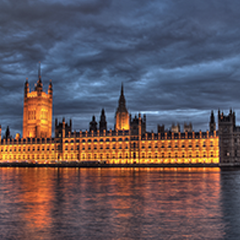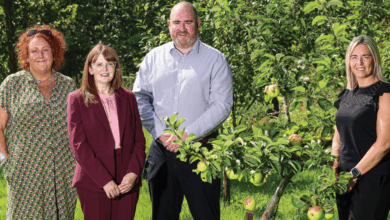New look Northern Ireland Affairs Committee
 As the dust begins to settle on the new composition of the latest UK Parliament, the Committee of Selection has approved the membership of the new Northern Ireland Affairs Committee. agendaNi reports.
As the dust begins to settle on the new composition of the latest UK Parliament, the Committee of Selection has approved the membership of the new Northern Ireland Affairs Committee. agendaNi reports.
A total of four new members* have been nominated to the Northern Ireland Affairs Select Committee, while a further nine were approved by the House of Commons to reassume their positions. Oliver Covile and Nigel Evans of the Conservative Party, Danny Kinahan of the UUP and Gavin Robinson of the DUP represent the new additions, while Laurence Robertson has been returned to his role as committee chair. Following his re-election, Robertson stated: “Since the changes were made which allowed chairmen to be elected rather than appointed, select committees have become more independent and influential, and this is a good thing.” He added: “I am therefore looking forward to continuing to scrutinise the work of the Northern Ireland Office and of the government as a whole, and also to work towards making policy proposals which will go towards helping to cement the peace in Northern Ireland and to also bring more and better opportunities, together with greater prosperity, to the people of the Province.”
The 13 member parliamentary watchdog is appointed by the House of Commons to scrutinise the expenditure, administration and policies of the Northern Ireland Office and associated bodies. The work of the committee is primarily conducted through inquiries, seeking evidence from a wide range of relevant sources and producing reports outlining findings and recommendations for the British Government. The Government then has a standard 60 days to produce a response to each report.
The select committee has the power to set its own agenda and pursue written and oral evidence. Special advisors may also be appointed to inquiries on an ad hoc basis in support of the clerk as head of the committee’s staff. During the 2010-2015 parliament, the average attendance by members stood at approximately 70 per cent.
In the lifetime of that last parliament, the most high profile work conducted by the Northern Ireland Affairs Committee was an investigation into the on-the-runs cases which came to public light in 2014. Concerned that a Government inquiry into the on-the-runs administrative scheme was too narrow in focus, the affairs committee announced its own parallel inquiry. The final published report concluded that: “The scheme should never have taken place in the manner in which it was developed and run,” adding: “It is questionable whether the ‘on-the-runs’ scheme was lawful or not, but its existence distorted the legal process.”
Over the course of the last parliament the committee also reported on an air transport strategy for Northern Ireland, the implementation of the armed forces covenant and fuel laundering and smuggling. There are no inquiries currently being conducted by the newly appointed body.
| Member | Party | Constituency | Laurence Robertson (Chair) | Conservative | Tewkesbury | David Anderson | Labour | Blaydon | Oliver Colvile* | Conservative | Plymouth, Sutton and Devonport | Nigel Evans* | Conservative | Ribble Valley | Stephen Hepburn | Labour | Jarrow | Sylvia Hermon | Independent | North Down | Kate Hoey | Labour | Vauxhall | Danny Kinahan* | Ulster Unionist Party | South Antrim | Jack Lopresti | Conservative | Filton and Bradley Stoke | Alasdair McDonnell | Social Democratic & Labour Party | Belfast South | Nigel Mills | Conservative | Amber Valley | Ian Paisley | Democratic Unionist Party | North Antrim | Gavin Robinson* | Democratic Unionist Party | Belfast East |





